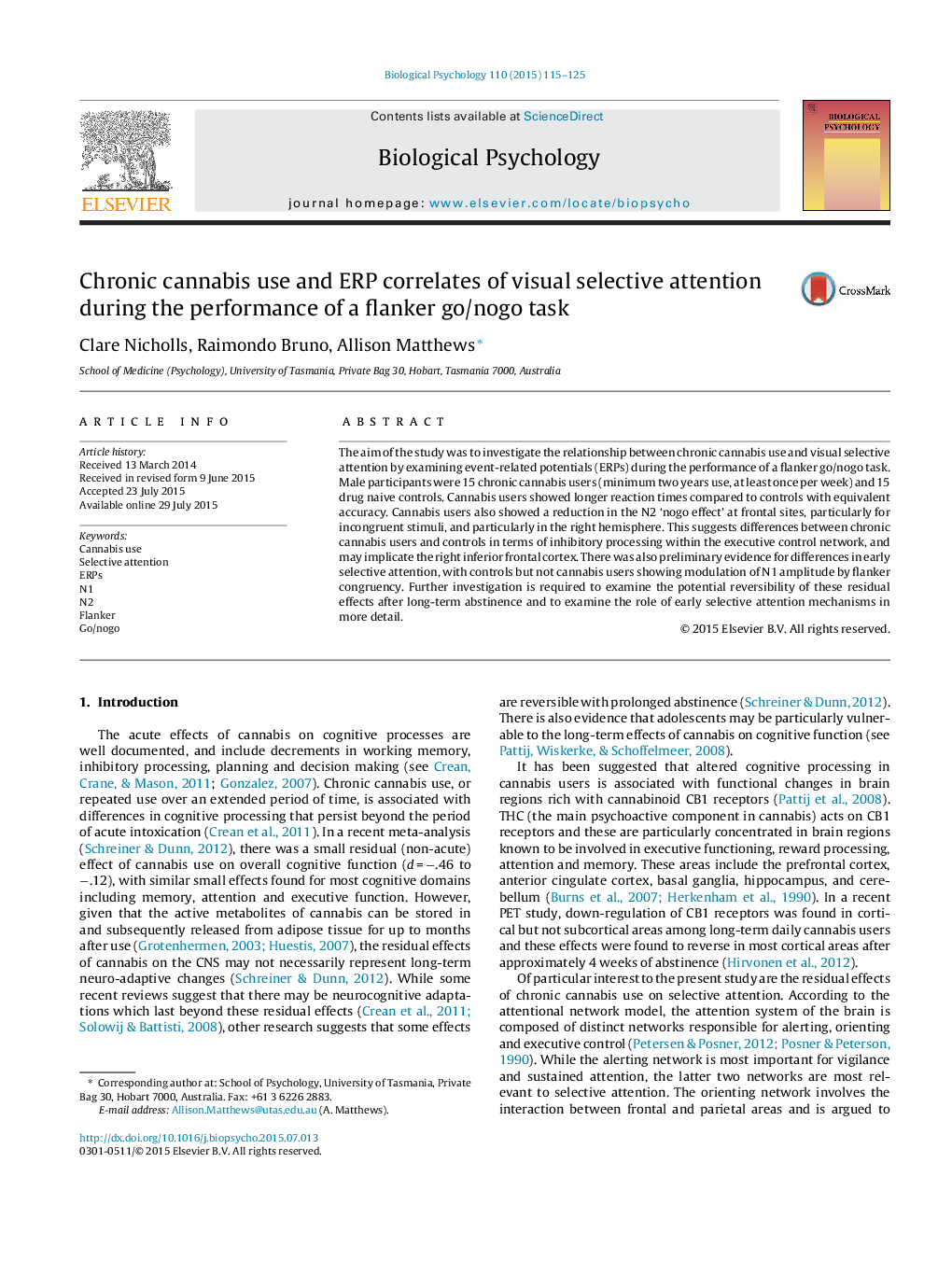| Article ID | Journal | Published Year | Pages | File Type |
|---|---|---|---|---|
| 920797 | Biological Psychology | 2015 | 11 Pages |
•Male cannabis users and controls completed a flanker go/nogo task.•The cannabis group showed slower responses than drug naïve controls.•Cannabis users showed a reduction in the N2 ‘nogo’ effect at frontal sites.•These findings suggest processing differences in the executive control network.•It is unclear whether these effects are reversible with prolonged abstinence.
The aim of the study was to investigate the relationship between chronic cannabis use and visual selective attention by examining event-related potentials (ERPs) during the performance of a flanker go/nogo task. Male participants were 15 chronic cannabis users (minimum two years use, at least once per week) and 15 drug naive controls. Cannabis users showed longer reaction times compared to controls with equivalent accuracy. Cannabis users also showed a reduction in the N2 ‘nogo effect’ at frontal sites, particularly for incongruent stimuli, and particularly in the right hemisphere. This suggests differences between chronic cannabis users and controls in terms of inhibitory processing within the executive control network, and may implicate the right inferior frontal cortex. There was also preliminary evidence for differences in early selective attention, with controls but not cannabis users showing modulation of N1 amplitude by flanker congruency. Further investigation is required to examine the potential reversibility of these residual effects after long-term abstinence and to examine the role of early selective attention mechanisms in more detail.
